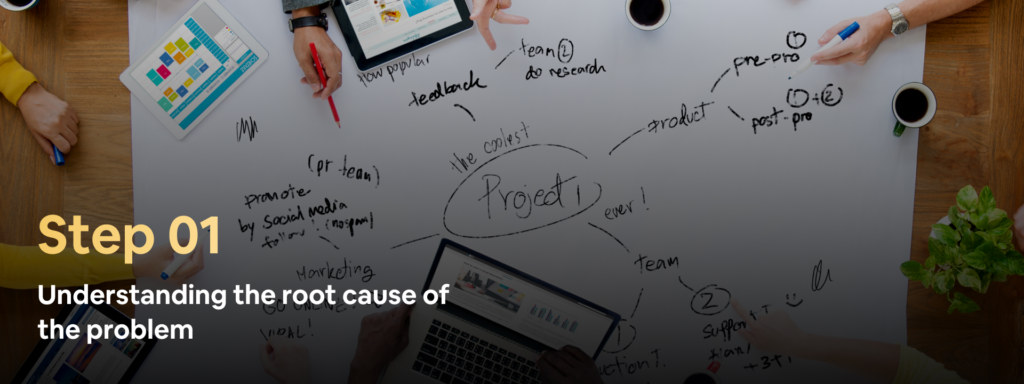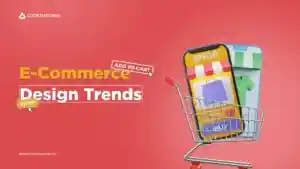The design process consists of five stages with the objective to build a user-centered design. The five stages are identifying problems, understanding users, analyzing correlation, ideation, and testing. Before we start with the design process let’s understand UX design first.
“Happy users are ultimately happy and returning customers.”
Clive K. Lavery
What is UX Design?
UX Design is the process of improving the satisfaction of the users by focusing on the usability, pleasure, and accessibility of the product.
It refers to how a user feels after interacting with your website. A great UX is achieved when you pay attention to generating appealing content and building a unique combination of structures to deliver a WOW-like experience.
Why UX Design is important?
To put it simply, UX is an attempt to evaluate the response of the users and their interaction points. First-rate companies are excellently investing in UX to multiply their revenue by providing easy-to-use design services.
Do you know there is research conducted by Baymard, found that 69.2 % of the customers abandon their cart even after adding the product?
With 9 years of continuous research, Baymard further concluded that the check outflow, as well as designing, are the main causes for leaving the site without making any purchase.
Now, you can understand the actual POWER of UX.
The Design Process
Investing in the Designing process is a financial win for your enterprise. This will outreach your identity and generate good ROI by bringing more and more leads to your way. A perfect UX design process is bound to deliver an intuitive experience to a mass audience.
So, why wait for the best things to happen? Instead, create one by ultra-focusing on delivering the best UX design ever.
UX Design Process Steps :
STEP: 1 Understanding the root cause of the problem

It is rightly said- if you have to chop down a tree, spend time sharpening the axe for a speedy and smoother result. This saying works perfectly for the design process.
In order to begin with the project, first, you need to spend good hours identifying the list of problems. Dig more and more to uncover the pain points of users with the design.
During this entire design process, your focus must be limited to-
- Targeted Demographics
- Building a strong brand value
Look after these basic to considerable questions to get solutions to the problem-
- What do all your metrics say about user experience?
- Do you have a spark with a user-friendly design?
- What is the main purpose of the product? How is it affecting the users?
STEP: 2 Building the buyer’s persona

Once, you have prepared the list of ‘could be’ problems and understood their origin, create the buyer’s persona for effective segmentation.
But, wait, let’s learn what actually the buyer’s person is and how it works?
Buyer’s persona is a detailed description of the fictional characters prepared to sum up the information of your targeted demographics.
Here, you will be segmenting your audiences based on- age, interest, behavior, demographics, and domain areas. This helps you in targeting the right user with the right strategy.
A well-researched buyer’s persona is effective enough to narrate the story of your brand and give you insights for attracting potential customers. It communicates the user’s goals and objectives.
Yes, you can conduct-
- 1 to 1 interview
- Conduct field surveys
- Arrange for focus groups
- Go for usability testing
STEP: 3 Analyzing the correlation between problems and the user’s persona

No information can be put to use if it is not very well analyzed. This requires the finest attention to detail for uncovering the relationship between the problem and the user persona.
So, let’s map for the user’s journey to evaluate their phases of experience with your product.
You can create a visually appealing map with a few best software to pinpoint the frequency and empathy of the users.
In fact, who wants to miss any single information?
Yes, none!
So, you can create a scenario map and pin it to your green board to brainstorm the possibilities of connection and set a hypothesis to overcome the problem.
STEP: 4 Designing the ideas for the planned execution

Now, that you have ample of relevant information, let’s transform your ideas into reality. This is the right stage to ACTUALLY work on the designs.
Sketching
In this stage, you can start with manual sketching to prepare a draft for the execution of your plan. And, yes, you will get a hell lot of ideas to give it a creative touch.
Wireframing
After sketching, convert it into wireframing for a successful prototyping test. Now, you will be focusing on improving the UI by arranging for layout, graphics, and animation.
This will definitely improve the user experience by emphasizing mainly the core values!
- Select the color palette
- Express your visuals
- Look after label placement, button size, and icons
STEP: 5 Testing and Launching the Designs

Well, this is an iterative process where you constantly test the feasibility of designs before launching publically.
Yes, if required, you can add new features or update the existing design to give a transformational outlook. Use advanced tools and software while undergoing the testing procedure.
But, the best way is to test your prototype on the users to drive real results out of their interaction. Ask questions, about the level of satisfaction they have achieved.
Don’t forget to note down the flaws identified by the users. This REALLY holds some SECRET sauce for a successful product launching.
It’s time to think about your OWN site’s UX
Well, now you have understood the clutter-free designing process. So, it’s your turn to revive the UX of your website & become the market leader within a limited time frame.
Start today. Give a voice to your brand!
If you want to beat your tough competitor and pose ahead challenges, you know, Code Theorem won’t let you down! Give us a call and our expert team will get back to you shortly.


















